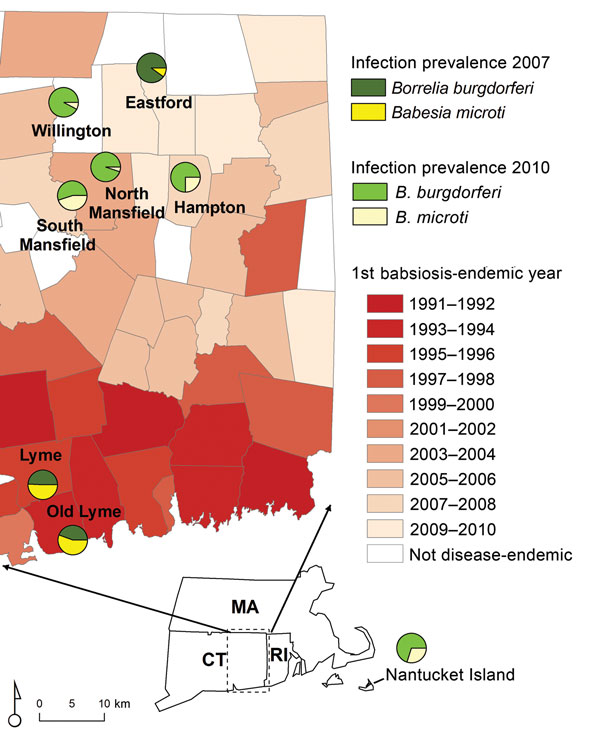Volume 20, Number 2—February 2014
Research
Monitoring Human Babesiosis Emergence through Vector Surveillance New England, USA
Figure 1

Figure 1. Borrelia burgdorferi and Babesia microti infection prevalence among humans and Ixodes scapularis ticks, eastern Connecticut (CT) and Nantucket, Massachusetts (MA)Shading indicates human babesiosis incidence in study towns by year in which the disease became endemic in the town (defined as the first year babesiosis cases were reported for 2 consecutive years)Iscapularis nymphal infection prevalence is shown for Bmicroti and Bburgdorferi in Lyme/Old Lyme in 2007 and for Nantucket and northeastern CT in 2010, represented as a pie chart for each sampled locationRI, Rhode Island.
Page created: January 17, 2014
Page updated: January 17, 2014
Page reviewed: January 17, 2014
The conclusions, findings, and opinions expressed by authors contributing to this journal do not necessarily reflect the official position of the U.S. Department of Health and Human Services, the Public Health Service, the Centers for Disease Control and Prevention, or the authors' affiliated institutions. Use of trade names is for identification only and does not imply endorsement by any of the groups named above.